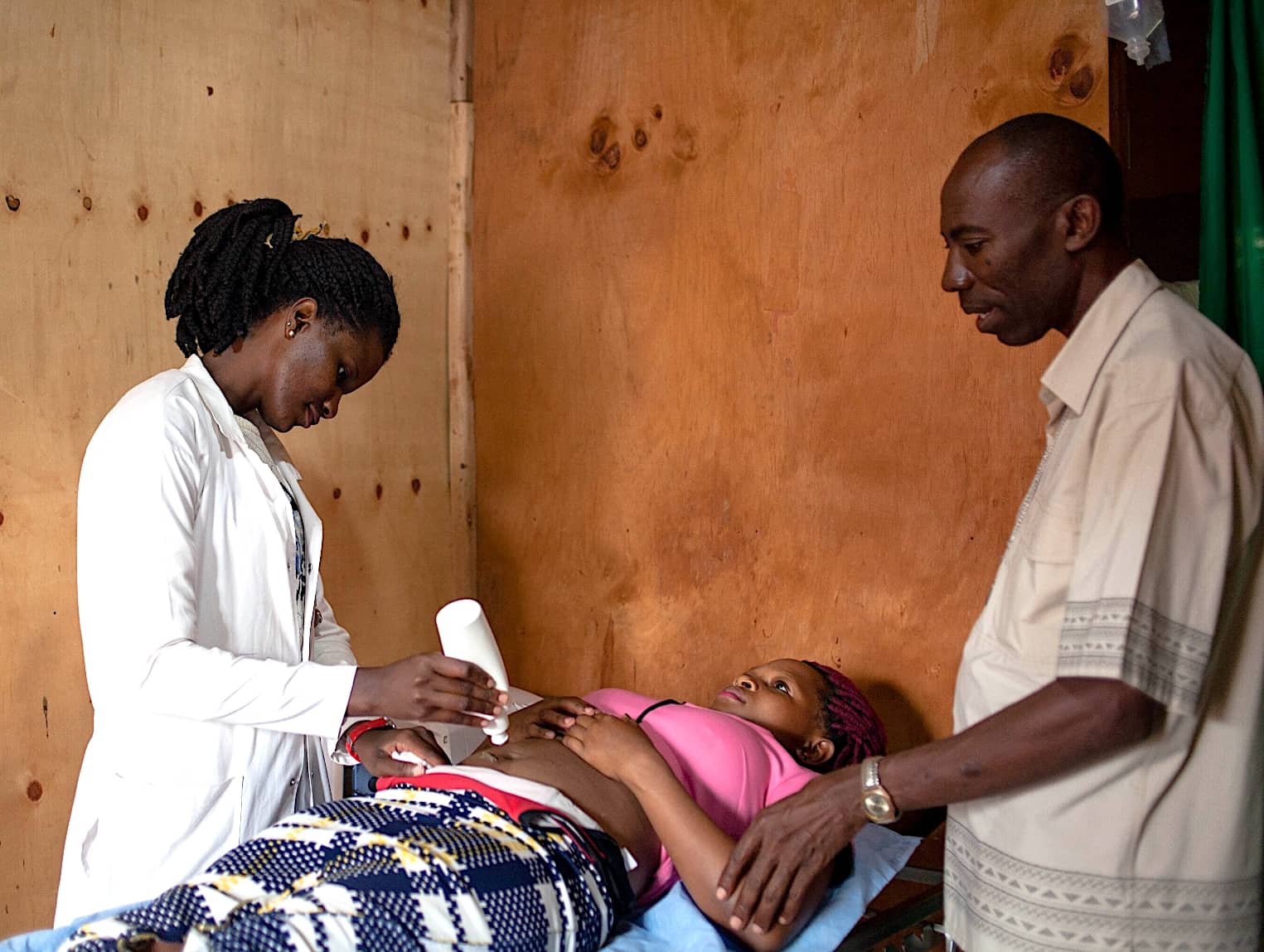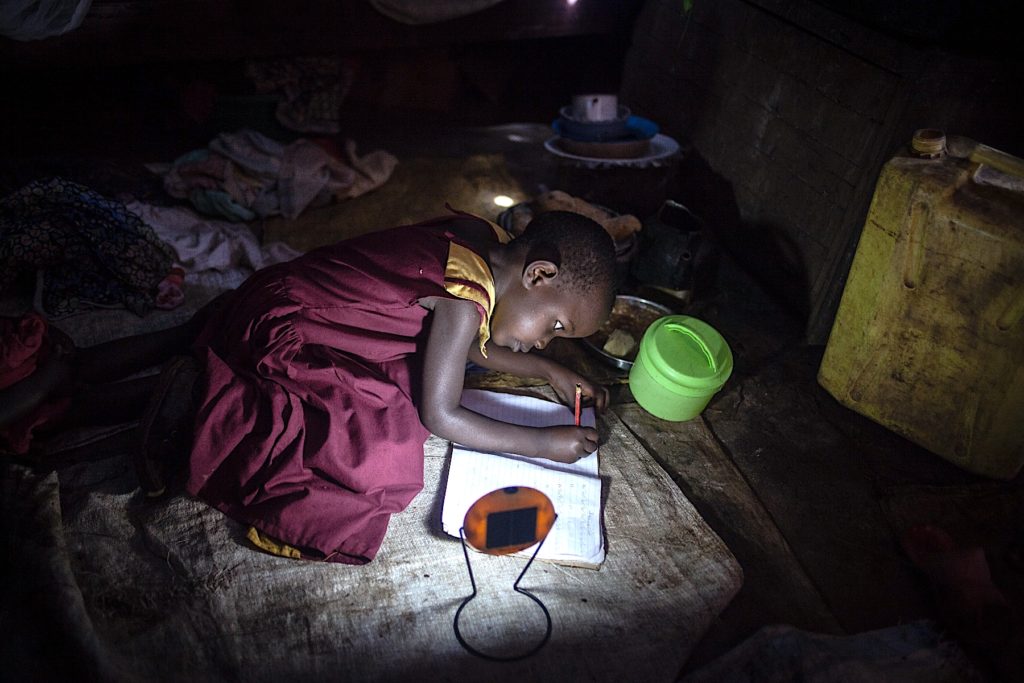Sarah Baird, Founder and Executive Director of Let There Be Light International, Named Buffalonian of the Week
By: Rubens Mukunzi of Karibu News
Energy poverty, living with the inability to access safe energy, leaves hundreds of millions the dark—literally. Once night falls, people living in non-electrified, off-the-grind areas in developing countries have few choices. They either use polluting and dangerous kerosene lights to continue their activities or stop them completely because of the dark.
Local Buffalo nonprofit Let There Be Light International seeks to provide these energy poverty-stricken areas with portable solar-powered lights, an eco-friendly and safer alternative to traditional lighting. The organization has donated thousands of these lights to people in Uganda and Malawi as well as installed solar electrification in remote rural medical facilities there.
We talked with Let There be Light International’s executive director Sarah Baird, our Buffalonian of the Week, to discuss the organization’s work and the problems caused by energy poverty in East Africa and around the world.
This interview has been edited for content and clarity.
What is Let There Be Light International?
Let There Be Light International is a nonprofit and we’re dedicated to fighting global climate change as well as global poverty. What we do is donate solar lights to very vulnerable families in off-grid parts of East Africa, and we focus on Uganda and Malawi. We work with local organizations who know who the most vulnerable people are. For instance, a handicapped elder, a family with young children, or new mother. Most people will use very dangerous kerosene lights, so we get them out of those homes and we donate safe solar lights.
We formed about three years ago in 2014, and I’m its founder and executive director. In the last three and a half years, we’ve donated 5,615 safe solar lights to families, impacting over 30,000 people. We’ve also solar electrified 17 off-grid health clinics, affecting 300,000 people. My role in the U.S. is to raise awareness of energy poverty, which is the state of living without safe energy. It’s also to raise awareness and to raise funds so we can purchase these lights and help people living in energy poverty.
Why did you choose Uganda and Malawi? I know other countries in Africa are suffering from energy poverty, but why these countries?
These are among the least developed countries, or LDCs, which means they have the lowest development and highest levels of poverty. They also have the highest levels of energy poverty. Most of the LDCs are land-locked, so they’re not on a coastline, and many of them are suffering from drought and the effects of climate change. Another primary reason is that English is spoken there.

According some reports from Africa, especially from Uganda. At least 90 percent of the people in Uganda are in poverty, but you choose to give them lights. To fight this poverty, they need money. Why did you choose lighting instead of funds?
We chose lights instead of money because in many of these off-grid communities, they’re not aware of the benefits of the lights. A donation of a single lights can have an impact for three to five years, the life of the light. What ends up happening is that we can give a family a light, and they’re saving 50 dollars a year, while they’re spending in Uganda 3600 Uganda shillings, about a dollar, a week [for kerosene]. They’re saving about $50 a year. Over the course of the life of the light, they’re saving $150-$250 dollars over three to five years. If you’re living in extreme poverty, if I give you $15, you might be able to buy some food or medicine, but it would never last you 3-5 years. The return on the investment is very long- term, and it’s also seeding markets and helping people understand the benefits of solar. That’s why we decided to go with solar.
“If you’re living in extreme poverty, if I give you $15, you might be able to buy some food or medicine, but it would never last you 3-5 years. The return on the investment is very long- term, and it’s also seeding markets and helping people understand the benefits of solar. That’s why we decided to go with solar.”

There’re two main reasons why I focused on solar lights. One reason is because people, who are using kerosene and living in extreme poverty, really need to have some access to lighting if they’re going to be keeping their family safe and be able to study at night. I recognize that this is a big, unmet need. There’s a lot of people selling lights, but there aren’t people finding people who can’t actually purchase lights and donating them.
Another reason is that when people burn kerosene, it’s incredibly bad for the environment. As we all know, climate change is an issue all of us are dealing with, and I want to make sure when people are using or trying to have access to lighting, they’re not damaging the environment more. Again, the lights have so many different impacts that are beneficial and the impacts are much, much greater than their actual cost.

0 Comments